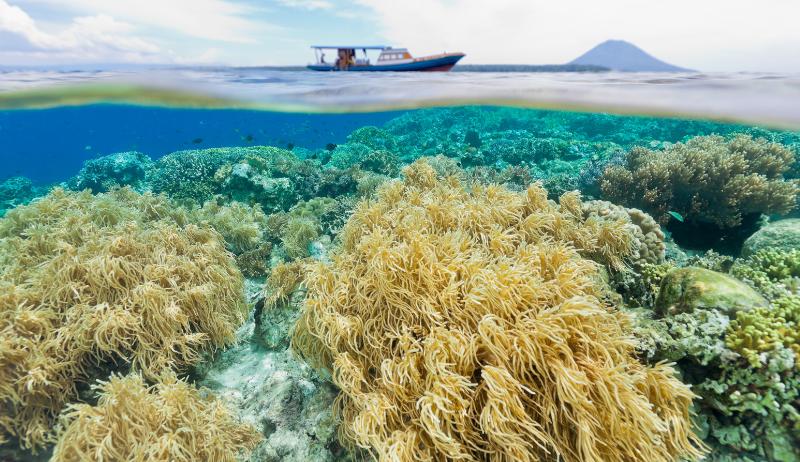Season Best: The Ultimate Guide to Sourcing Tuna Species from Indonesian Waters
December 27, 2024

Season Best: The Ultimate Guide to Sourcing Tuna Species from Indonesian Waters
Indonesia vast maritime territory is home to some of the world most prized tuna species. For seafood buyers, restaurateurs, and fishing industry professionals, understanding the optimal seasons for different tuna species is crucial for securing the highest quality catch.
Understanding Indonesia Tuna Fishing Grounds
Indonesia strategic location between the Indian and Pacific Oceans creates perfect conditions for tuna migration and breeding. The country primary tuna fishing grounds include:
- Banda Sea
- Indian Ocean (South of Java and West Sumatra)
- Sulawesi Sea
- Arafura Sea
- Pacific Ocean (North of Papua)
Key Tuna Species and Their Peak Seasons
Yellowfin Tuna (Thunnus albacares)
Peak Season: March to June, September to November
Secondary Season: December to February
Yellowfin tuna, highly valued for sashimi and premium canned products, is most abundant during two distinct periods. The March-June period coincides with warmer waters and increased plankton activity, while the September-November season aligns with the northwest monsoon.
Skipjack Tuna (Katsuwonus pelamis)
Peak Season: April to August
Secondary Season: October to December
Skipjack tuna, essential for the canning industry, shows strong presence during the southeast monsoon period. The warmer waters and abundant food sources during these months create ideal conditions for large schools of skipjack.
Bigeye Tuna (Thunnus obesus)
Peak Season: May to September
Secondary Season: January to March
Bigeye tuna, preferred for high-end sashimi markets, is best caught during the middle of the year when deeper waters are slightly warmer. These conditions allow the fish to venture into shallower waters more frequently.
Albacore Tuna (Thunnus alalunga)
Peak Season: July to October
Secondary Season: February to April
Albacore, known for its light meat and high-quality canned products, is most prevalent in southern Indonesian waters during the cooler months.
Regional Variations and Fishing Conditions
Western Indonesia
- Best Period: March to July
- Key Areas: West Sumatra, South Java
- Primary Species: Yellowfin, Bigeye
Central Indonesia
- Best Period: May to September
- Key Areas: Banda Sea, Flores Sea
- Primary Species: Skipjack, Yellowfin
Eastern Indonesia
- Best Period: June to October
- Key Areas: Arafura Sea, Papua waters
- Primary Species: Albacore, Bigeye
Factors Affecting Tuna Availability
Weather Patterns
- Monsoon seasons significantly impact fishing conditions
- Wind patterns affect surface water temperatures
- Rainfall influences water salinity and fish migration
Water Temperature
- Optimal range: 18-28°C depending on species
- Surface temperature affects fish distribution
- Thermocline depth influences fishing strategy
Food Availability
- Plankton blooms attract baitfish
- Seasonal upwelling brings nutrients
- Migration patterns follow food sources
Planning Your Sourcing Calendar
First Quarter (January-March)
- Focus on yellowfin from western regions
- Consider albacore from southern waters
- Monitor bigeye availability
Second Quarter (April-June)
- Prime time for skipjack
- Peak yellowfin season
- Beginning of bigeye season
Third Quarter (July-September)
- Optimal for bigeye and albacore
- Strong skipjack availability
- Continued yellowfin catches
Fourth Quarter (October-December)
- Secondary skipjack season
- Late yellowfin runs
- Transition period for most species
Future Outlook and Climate Considerations
Climate Change Impact
- Shifting migration patterns
- Changes in peak seasons
- Adaptation of fishing strategies
Industry Developments
- Improved tracking systems
- Enhanced preservation methods
- Sustainable fishing innovations
Conclusion
Understanding the seasonal patterns of Indonesian tuna species is crucial for successful sourcing. By aligning procurement strategies with natural cycles and considering regional variations, buyers can optimize their supply chain and ensure consistent access to high-quality tuna. Remember to always work with reputable suppliers who follow sustainable fishing practices and maintain proper documentation.
This guide serves as a general reference. Actual conditions may vary based on numerous factors including climate change, local weather patterns, and regulatory changes. Always consult with local fishing authorities and suppliers for the most current information.

 English
English Chinese
Chinese